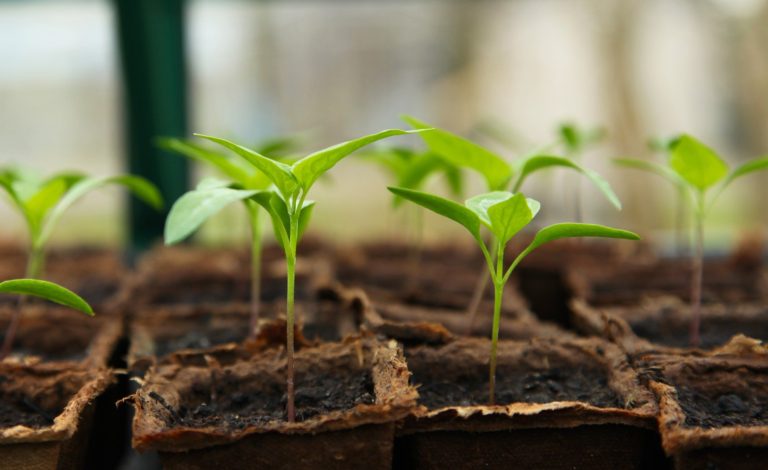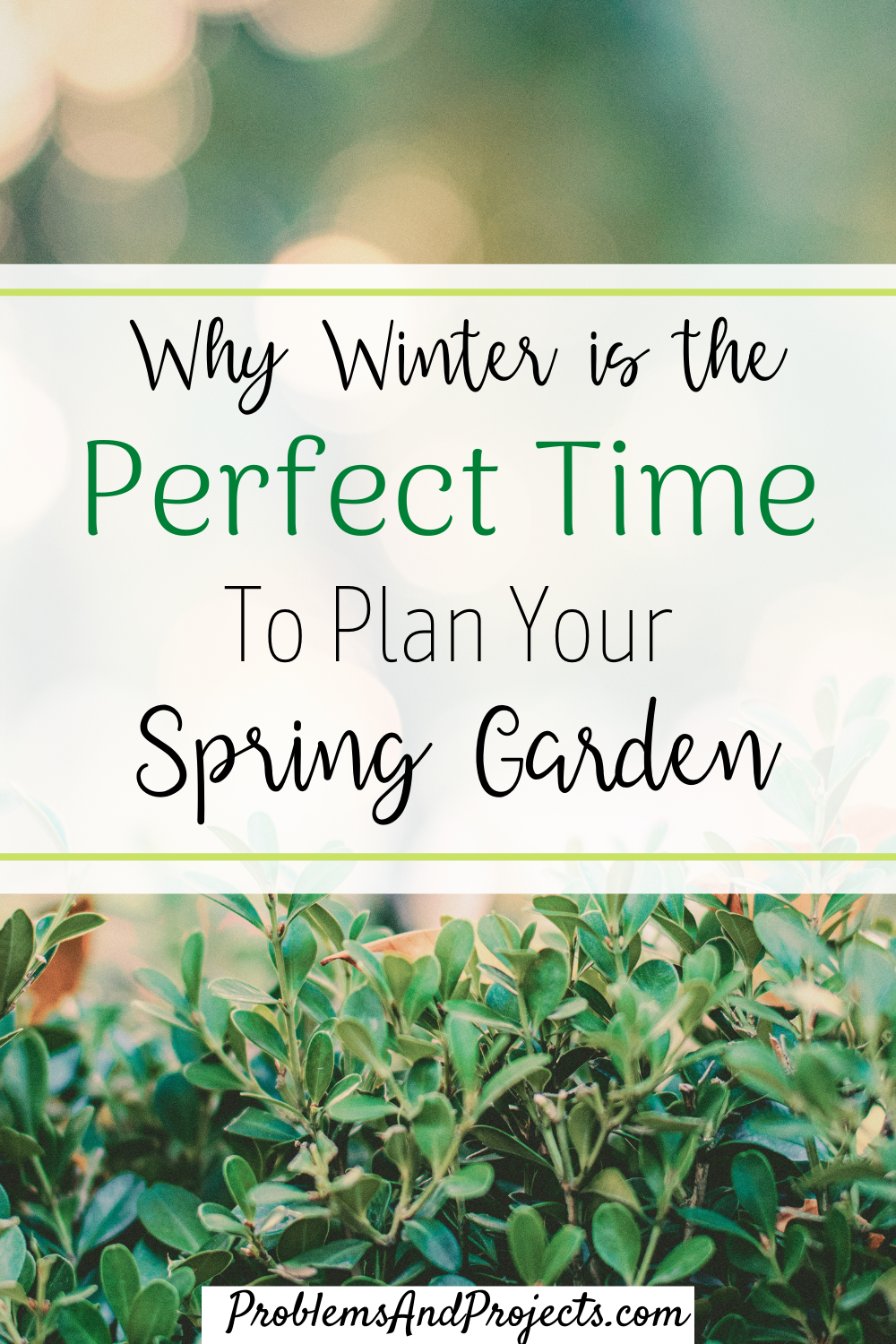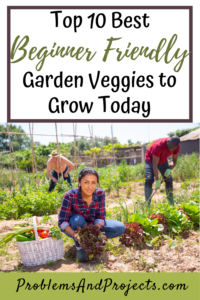The peak of a Polar Vortex might seem like a weird time to plan your garden, but don’t be fooled by the frigid temperatures outside! Late winter is the perfect time to plan your garden for the coming growing season.
In fact, February might even be a little bit later than you want to start if you live in a very warm climate, but here in zone 8, the growing season is just preparing to ramp up!
Full disclosure: I wanted to post this in mid February! Then, Texas froze, and we spent a week without power/internet. Needless to say, now, I’m catching up on blogging AND gardening… Life happens.
If you’re on the fence about planning the garden in single digit temperatures, allow me to encourage you. Don’t wait! Start your garden plan and take those first steps this month!
Growing a garden can be a great way to eat healthier, slim down your budget, live more sustainably and self sufficiently, and be better prepared for unexpected emergencies. The act of gardening can even help motivate picky eaters to expand their veggie profile. That’s a lot of incentives!
If you’re still not convinced, here are a few great reasons not to wait.
Problems and Projects is a participant in the Amazon Services LLC Associates Program, an affiliate advertising program designed to provide a means for sites to earn advertising fees by advertising and linking to Amazon.com. This post may contain affiliate links through Amazon or other affiliate programs. If you choose to make a purchase through an affiliate link, I make a small commission at no additional cost to you. All opinions are my own and I only recommend products that I believe in. Read my full disclosure here. Thank you for your support!

1. Plan Your Garden and Level the Learning Curve
I can’t count how many times I’ve seen or heard people claim they’ll just start their Victory Garden when the emergency comes.
If you’ve never grown food before, this is a bad plan. Odds are great that you won’t even have much success in your first year as a beginner gardener, which by the way, is completely normal and should never deter you!
It’s hard to grow all your food. As a matter of fact, I’ve been dabbling in gardening for over a decade now. If I had to survive only on what I can grow, I would starve. Quickly.
While plants and seeds ultimately have the singular goal of growing and producing seed, it’s rarely that simple. There’s a lot to consider when growing food. A little bit of planning will help you avoid, or at least minimize, some of the most common beginner gardening failures!
I want to quickly preface with this. There’s A LOT of information to consider and learn. Try not to get too overwhelmed! Even master gardeners make mistakes, fail, and learn new things every year.
- Growing season – Most plants require specific growing conditions to succeed. Some, like peas, only thrive in cool weather. Others, like sunchokes, love blazing heat. Some have to start out cool, then finish up in warmer weather. A few seeds even require freezing and then warming before they will sprout. Plants also have different sunlight and water requirements. Seasonal patterns impact how plants grow. Then, you need to consider what the growing season will actually allow where you live. Growing produce in Texas is nothing like growing produce in Alaska. Heck, growing food in Houston doesn’t even follow the same rules as growing in Dallas.
- Sprouting preferences – Plants and seeds are weirdly picky considering their ultimate goal is survive and reproduce. Some seeds, like root veggies and okra, prefer to be placed right in the dirt outside and are more likely to die if you try to transplant them. Others, like tomatoes, eggplant, and peppers, almost require starting inside well before your last frost date to grow prolifically.
- Space Requirements – Plants have different space needs in order to thrive. Are you growing your garden in pots on a balcony? A Shallow raised bed? What about a sprawling backyard? Will your plants spread out or trellis up? Depending on your climate, plants might even need to grow closer together or farther apart to help prevent disease or to control weed growth. It’s really important to think about what you can actually grow in the space you have.
- Soil and Nutrient Needs – Do you know what type of soil and fertilizer your plants will need? Okra might love southern clay soil with little added nutrients, but carrots sure won’t. If you over fertilize, you can burn plants, and if you use the wrong kind on root veggies, you’ll get lots of greens and not much else. That’s not to say that feeding plants is super complicated. It’s really not. But a foundation of good soil with regular amendment is a must have for just about everything.
- Pest control – Ah, pests. Everything wants in on your haul, from insects to squirrels to the neighborhood tomcat. How are you going to keep them out? If you’re going the organic pest control route, expect to fail often and learn lessons frequently. Oh, and not enough bugs causes problems, too. Good luck with cucumbers, zucchini, and just about every flowering plant if you don’t have pollinators.
- Time – How long or short is your growing season? Do you have more than one? When do those seasons start and end for you. (Hint: It’s almost certainly not on the first day of spring!) If you have long winters and short growing seasons, you may need to stick with early producers. You’ll also likely need to start seeds in winter or buy plant starts in spring. Do you have blistering summers and mild winters? Then you probably have two or three different growing seasons of varying lengths and will also need to plan accordingly. Then, of course, you need to consider how much time you can actually put into your garden. Don’t throw 1,000 seeds outside if you only have 15 minutes before bedtime to perform garden maintenance. It won’t go well!
2. Pandemic Life Continues
You may have noticed that things really haven’t mellowed out much since last year in terms of pandemic life. In fact, you might be one of the many, many people still negatively impacted by this.
Since the situation hasn’t improved much from last year, we can expect to see many of those same patterns continue through 2021. Whether it’s material shortages, higher prices, lack of access, delayed shipping, or an uptick in preparedness living, a whole bunch of repeating patterns are begging you to plan your garden early this year.
- Shortages of... well... everything
Last spring, when the health crisis really began impacting large numbers of people, suppliers observed a surge in prepping behaviors. Stockpiling supplies and panic buying became a societal norm overnight. We all remember when toilet paper and canned goods were cleaned off the shelves for months.
You might not have realized that everything from soil to seeds to gardening equipment and fertilizers also disappeared from stores, online and in person alike. Last year, if you didn’t buy your seeds for the year by late March, you probably didn’t get seeds.
This year promises to work similarly. Many smaller seed companies have already temporarily closed ordering or promise long shipping delays. Larger equipment, tools, and machinery have either already sold out or have drastically limited buyer options.
The time to purchase garden supplies was really about 6 weeks ago. But if you’re a little behind on your timeline, there’s no time like the present. Don’t wait until spring. You might miss out.
- Food costs continue to climb
Have you guys noticed rising food costs in your area? I sure have. It seems like everything has gotten noticeably more expensive in the past year. That’s probably not going to change anytime soon.
Honestly, starting your first garden this year won’t likely save you a fortune in grocery costs right away. However, establishing a garden now can help you save some cash down the line. Consider it an investment in the preparedness lifestyle that we’ve all come to know and grumble about.
Oh, and if you’re entire state just uncharacteristically froze over, you can bet that most of what was growing just met its icy death. This winter promises food shortages and increased pricing on late winter crops like citrus and leafy greens. Milk, dairy, and meat will most likely follow suit.
Plan your garden now, so you can start providing your own supply of produce favorites when shortages happen.
- Everyone’s prepping right now
In the United States alone, an estimated 15-30 million more people started gardens last year.
That’s a whole lot of unanticipated gardeners, and a lot of those people will likely keep growing through the duration of the pandemic, and maybe even beyond that.
Here’s the thing about garden supplies, though. We can eventually amp up production on factory made items to account for a sudden surge in demand. Plants just don’t work that way.
Most baby transplants you get at the garden center take at least 6-8 weeks to grow, and there’s a short window of time where it’s still worth selling them. See seasons above! Extra plant babies require extra soil, fertilizer, water, and space. It’s near impossible to pump out millions of extra seedlings at the last minute.
Actual seeds are even harder to time. In order to collect seeds, you have to let a plant mature, complete it’s growth cycle, and go to seed. Seeds must then be gathered, processed, dried, and packaged.
Some plants actually require two full growing seasons to produce seeds. The seed packets you’ll buy this year were most likely produced last growing season, and that’s just what there is. You can’t really rush the process.
So, when a seed company runs out of seeds for the season, they’re just out for the season. When enough sources run out for the season, your local Walmart isn’t getting anymore delivered.
If you wait until after everyone else has grabbed their seed packets and plant starts, you just might be out of luck again this year. High demand and limited supply don’t usually bode well for the procrastinators among us.
Want more budget friendly ways to prepare for emergencies? Check out these other great preparedness posts.

3. Plan Your Garden to Increase Your Success Rate
Some activities lend themselves well to diving in headfirst without a plan. Gardening is not one of them. Obviously, larger gardens fare better with more intricate planning. Even a tomato plant in a container on the patio needs at least a little bit of planning and consideration. Pot size, fertilization, sun exposure, and access to water still need to be considered with container gardens.
When you plan your garden early, you can really help yourself get a head start on the season and avoid some major gardening pitfalls.
- Planning Takes Time
How much time really depends on your garden plot size, plant variety, and your own personal planning abilities. It’s never a quick process for me. This year’s garden plan took me 3 full days (we’re talking like 8 hour work days) over holiday break. Just to plan out my 70-ish square feet of growing space.
Of course, I’ve decided to plant a bunch of new-to-me varieties I’ve never grown before. That means lots of research to learn when to plant, how long to grow, where to put the plants, how the variety actually grows, etc.
- Get ahead on seed starting
Some plants just don’t do so great if you pop seeds in the ground when the soil warms up. I’m looking at you, tomatoes and peppers!
If you have one short growing season, like in most northern climates, summer hardy crops will require a head start indoors.
Hot, southern climates, you’re not exempt. There’s a good chance that you actually have 2 or 3 growing seasons, not just one big long one. Here in zone 8, for instance, we get a good, long spring from mid-March through maybe late June. In July and August, we become a dusty, barren, hellscape where peppers drop blossoms hourly and everything except okra shrivels and dies. Then, we get an unreliable short season from late August to late October. After Halloween, all bets are off. Will it snow? Maybe. Will a hurricane, tornado, or severe hailstorm batter your nearly ripe veggies at the last minute. Probably!
By starting seeds indoors during the inclement times, you increase your odds of success and shorten the time it takes to ripen all that hard earned produce.
- Create those garden layout plans
A little bit of planning beforehand means you’re not standing in the yard staring at a bare patch of land with an armful of baby veggie plants. It’s not just me, is it?
Figure out right now where things need to go, how long they should stay, and whether you can get a second crop of something in at the last minute.
As an example, my two largest beds will pretty much get eaten up by long season veggies like tomatoes, corn, melons, beans, eggplant, and squash. Nothing else is going in there until fall. Oh, and I will most definitely need to start many of my fall seeds indoors over that previously mentioned barren, hellscape summer. More planning!
My smallest corner bed, however, will house quick growing and cold loving peas, radishes, and leafy greens right now. By the time they’re ready for harvest, it’ll be just the right time to pop some okra in the ground. I’ll get two successions from this bed before fall.
- Get that soil ammended
Ammending soil and fertilizing plants are my second least favorite garden chore, right next to pest management. But it’s gotta be done if you want healthy plants.
Many veggies are notoriously greedy for nutrients. By planning ahead in winter, you can take some extra time to add some rich compost to your soil and give those plant babies a head start. Strong, healthy plants need less water, handle weather extremes better, and bounce back from pest or weather damage more easily than nutrient starved plants.
Plan your garden, and save yourself a whole lot of extra work and heartache later on, when it’s too hot to even think about going outside.
Have You Made Your Spring Garden Plan Yet?
Even if you’re not moving a single seed or plant start outdoors until May, I hope I’ve encouraged you to be proactive and plan your garden for spring while winter still has us in its grasp.
This is the perfect time to figure out what you want to do and start gathering materials. For a lot of you, it’s even a good time to start seeds indoors or get a few frost tolerant plant babies outside.
No clue where to begin? Stick around a while. In the next week or two, I’ll be posting an article all about the best beginner garden veggies to start with. You’ll even get some advice about which varieties you might not want to try out in your first year.
While you’re at it, don’t forget to share this post on your favorite social media, follow us, and subscribe to our newsletter, so you can stay up to date on all the latest info and events.





142018 127372Approaches for dilution antimicrobial susceptibility beadlets for beagles that grow aerobically-fifth edition. 787185
Thank you for every other great post. Where else may anyone get that kind of information in such a perfect method of writing? I’ve a presentation next week, and I’m at the search for such information.
It’s hard to find knowledgeable people on this topic, but you sound like you know what you’re talking about! Thanks
263111 614280Hello! I just now would pick to supply a enormous thumbs up with the wonderful info you could have here within this post. I will be coming back to your blog internet site for additional soon. 949803
cujrnqmyh uccfk jjffbip wlej yfamigpvfdbscdc
I so wish I had a green thumb! This is a great post, thanks for sharing. Siobhan ♡ | Vegan Babe Life
My thumb is not especially green either, to be honest! I just love trying to grow food and learning more every year.